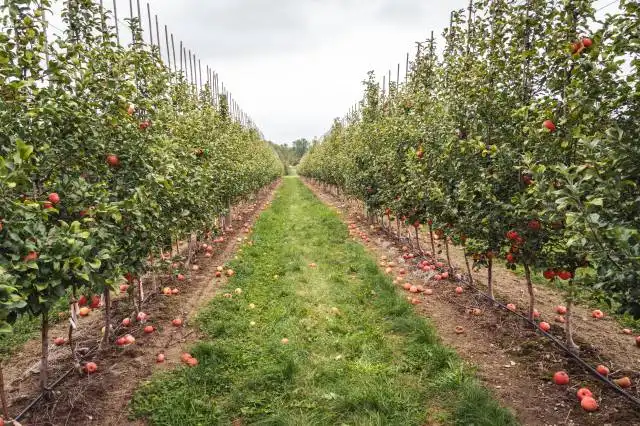Start a Community Garden
Planting Seeds of Unity: The Utopia of Community Gardens
| Updated


COMMUNITY GARDEN
Unleash your green thumb into the unconventional grounds of starting a community garden! A community garden business provides a piece of land for the public to collectively grow and enjoy fresh fruits, vegetables, and flowers. What you're creating is more than a garden - it's an eco-friendly haven, where neighborhood bonds are nurtured in the very soil of communal labor. So, get ready to plant the seeds of unity, organically grow delight and harvest both health and happiness!
Jump to Business Plan
RELATED BUSINESS IDEAS
Browse ALL Sustainability & Eco-Friendly Initiatives Business Ideas
Discover Your Perfect Domain
Unlock the door to your online success with our hand-picked selection of premium domain names. Whether you're starting a new venture or rebranding an existing one, the right domain can set the tone for your digital presence. Browse through our curated list, each with its unique potential to enhance your brand's visibility and credibility.
COMMUNITY GARDEN MINI BUSINESS PLAN
This a quick reality check to help you identify the strengths and weaknesses of your business concept before you dive in.
Business Idea: Community Garden
Expected Percent Margins:
- Gross Margin: Around 40% for produce sales, other revenue streams can significantly increase this.
- Net Profit Margin: Between 10 to 20%, depends on expenses including water, garden maintenance and lease/rent.
Earnings Expectations:
- Daily Earnings: Approximately $50 - $150
- Weekly Earnings: Approximately $350 - $1,050
- Monthly Earnings: Approximately $1,500 - $4,200
- Annual Earnings: Approximately $18,000 - $50,400
Actions to Hit Those Numbers:
Infrastructure and Setup:
- Initial Investment: Works could cost from $5,000 to $25,000 depending on the size of the land, type of plants, and necessary infrastructure.
- Area Selection: Choose an area with fertile soil that gets enough sunlight.
- Garden Design and Planning: Plan your garden in a way that optimizes space and enables easy maintenance.
Operations:
- Plant Selection: Grow fruits and vegetables that are in demand in your local area.
- Maintenance: Regularly water, prune and weed the garden.
Marketing and Sales:
- Direct Sales: Sell the produce directly to consumers, you can set up a small stand on-site.
- Cooperative: Consider cooperative sales methods such as Community Supported Agriculture (CSA) programs.
- Workshops: Organize gardening workshops and charge a minimal fee.
Cost Control:
- Water Costs: Implementing a rainwater harvesting system can help reduce water costs.
- Maintenance Cost: Consider working with volunteers to handle some of the maintenance tasks.
Community Engagement:
- Community Events: Organize events that invite community members to the garden, fostering a sense of collective ownership.
Please note, earnings can significantly vary depending on various factors including the size of the garden, type of plants grown, local demand for products, and marketing efforts. Always carry out comprehensive market research and consult a financial advisor before starting the garden.
NOT WHAT YOU HAD IN MIND? Here are more ideas



Browse ALL Sustainability & Eco-Friendly Initiatives Business Ideas
Grab Your Business Website Name
Before you get caught up in the whirlwind of setting up your business, invest in a domain name. It's a small but significant step that lays the foundation for your brand and makes it easier for customers to find and trust you. Just like you wouldn't build a house without securing the land first, don't build a business without securing your domain name.
"Why? Can't that wait?" Here's why it shouldn't
Step 1: Determine if Starting a Community Garden is the Right Endeavor
Breakdown of Startup Expenses
Before starting a community garden, it is important to understand the startup costs associated with the project. This includes the cost of land, tools, seeds, and other materials needed to start the garden. Additionally, the cost of labor and any permits or licenses needed should be taken into account. It is also important to consider the cost of marketing and advertising to help spread the word about the garden. Finally, it is important to factor in the cost of insurance to protect the garden from any potential damages.
Breakdown of Ongoing Expenses
Once the garden is up and running, there are certain ongoing expenses that must be considered. This includes the cost of labor, materials, and other supplies needed to maintain the garden. Additionally, the cost of marketing and advertising should be taken into account to help keep the garden visible. It is also important to factor in the cost of insurance to protect the garden from any potential damages. Finally, the cost of utilities such as water, electricity, and gas should be taken into account.
Examples of Ways to Make Money
There are a variety of ways to make money from a community garden. This includes selling the produce grown in the garden, offering classes or workshops, and renting out the space for events. Additionally, the garden can be used as a source of income by offering services such as landscaping or gardening consultations. Finally, the garden can be used to host fundraisers or other events to help raise money for the garden.
Step 2: Name the Community Garden
When naming a community garden, it is important to think of a name that is both memorable and meaningful. It should be something that reflects the mission of the garden and the community it serves. Consider the following tips when coming up with a name:
- Brainstorm ideas with friends and family. Ask them what they think of the name and get their feedback.
- Research other community gardens and see what names they have chosen.
- Consider the type of plants and vegetables that will be grown in the garden.
- Think of a name that is unique and creative.
- Make sure the name is easy to pronounce and spell.
- Consider the geographical area and the culture of the community.
- Make sure the name is not already taken by another business or organization.
- Consider the mission of the community garden and how the name reflects that mission.
- Make sure the name is not too long or complicated.
Once you have brainstormed some ideas, it is important to research the names you have come up with to make sure they are not already taken. You can do this by searching the internet, checking with the local government, and searching the US Patent and Trademark Office database. It is also important to make sure the name is not too long or complicated, as this can make it difficult for people to remember and pronounce. Additionally, consider the geographical area and the culture of the community when choosing a name. This can help to ensure that the name is meaningful and relevant to the community. Finally, make sure the name reflects the mission of the community garden. This will help to ensure that the name is memorable and meaningful to those who visit the garden.
Step 3: Create a Business Plan
Creating a business plan is an essential step in starting a community garden. The business plan should include a detailed description of the business, including the mission statement, goals and objectives, and a description of the services offered. It should also include a market analysis, a financial plan, and a marketing plan.
The market analysis should include information about the local area, such as population, demographics, and competition. It should also include an analysis of the potential customer base, as well as an analysis of the local economy.
The financial plan should include a breakdown of startup expenses, such as land acquisition, equipment, and supplies. It should also include a breakdown of ongoing expenses, such as labor, utilities, and maintenance. Additionally, the financial plan should include examples of ways to make money, such as selling produce or hosting events.
The marketing plan should include a description of the target market, as well as a description of the marketing strategies that will be used to reach that market. It should also include a timeline for launching the marketing efforts, as well as a budget for those efforts.
Finally, the business plan should include a plan for how the business will be managed, including a description of the roles and responsibilities of the team members. It should also include a timeline for the launch of the business, as well as a plan for how the business will grow over time.
Step 4: Secure Funding
Securing funding is a crucial step in starting a community garden. There are several sources of funding available, such as grants, crowdfunding, and donations. Grants are a great way to get money for a community garden, as they are typically provided by government agencies, private foundations, and corporations. Crowdfunding is another option, as it allows individuals to donate money to a cause they believe in. Finally, donations can be solicited from local businesses, individuals, and other organizations.
Writing a Business Plan
Writing a business plan is an important part of securing funding for a community garden. A business plan should include a detailed description of the project, a budget, and a timeline. It should also include a marketing plan and a list of potential sources of funding. Additionally, it should include a list of potential partners and a list of potential volunteers. This will help potential funders understand the scope of the project and why it is important.
Applying for Grants
Once the business plan is complete, the next step is to apply for grants. There are many different types of grants available, so it is important to research which ones are most appropriate for the project. Additionally, it is important to read the grant requirements carefully and to submit a complete and accurate application. Finally, it is important to follow up with the grantor to ensure that the application is being considered.
Seeking Donations
In addition to grants, donations can also be a great source of funding for a community garden. Donations can be sought from local businesses, individuals, and other organizations. It is important to create a compelling pitch that outlines the project and why it is important. Additionally, it is important to be prepared to answer questions about the project and to provide potential donors with information about how their donations will be used.
Step 5: Choose a Location
When choosing a location for a community garden, there are several factors to consider. First, the area should be accessible to the community and have enough space for the garden. Second, the location should have adequate sunlight and be free of any potential hazards. Third, the location should have access to water and other necessary resources. Finally, the location should be close to a source of compost or other organic matter.
Researching the Local Regulations
Before choosing a location, it is important to research the local regulations. Depending on the area, there may be zoning laws or other regulations that need to be taken into consideration. Additionally, it is important to research any potential liability issues that may arise from the garden. This includes researching any potential environmental hazards or other risks that may be associated with the garden.
Securing the Location
Once the ideal location has been identified, it is important to secure the location. This can be done by either leasing or purchasing the land. If the land is leased, it is important to make sure that the lease agreement is clear and that all parties understand the terms of the agreement. Additionally, it is important to make sure that the lease agreement is in line with the local regulations. If the land is purchased, it is important to make sure that all necessary paperwork is completed and that the deed is properly recorded.
Preparing the Site
Once the location has been secured, it is important to prepare the site for the garden. This includes removing any debris or other obstacles that may be in the way. Additionally, it is important to make sure that the soil is suitable for gardening and that any necessary amendments are added. Finally, it is important to make sure that the site is properly leveled and that any necessary drainage systems are in place.
Step 6: Obtain Necessary Permits and Licenses
Before starting a community garden, it is important to research the types of permits and licenses required in your area. Depending on the size and scope of the garden, you may need to obtain a zoning permit, a business license, and/or a tax identification number. You may also need to obtain a special license to sell produce from the garden. Additionally, you may need to obtain a permit to use any public land for the garden.
Where to Obtain Permits and Licenses
The best place to start when obtaining permits and licenses is your local government office. They will be able to provide you with the necessary information and forms to apply for the permits and licenses. Depending on the type of permit or license, you may also need to contact other government agencies such as the Department of Agriculture or the Department of Natural Resources. Additionally, you may need to contact your local chamber of commerce or other business organizations to obtain information on the necessary permits and licenses.
Cost of Permits and Licenses
The cost of permits and licenses can vary greatly depending on the type of permit or license and the location of the garden. Generally, the cost of a business license is relatively low, while the cost of a zoning permit or a special license to sell produce can be more expensive. Additionally, some permits and licenses may require a fee to be paid annually in order to maintain the permit or license.
Time Frame for Obtaining Permits and Licenses
The time frame for obtaining permits and licenses can vary greatly depending on the type of permit or license and the location of the garden. Generally, the process can take anywhere from a few weeks to several months. It is important to plan ahead and allow for enough time to obtain the necessary permits and licenses before starting the community garden.
Step 7: Develop a Garden Plan
When developing a garden plan, there are several components to consider. First, decide what types of plants will be grown in the garden. Consider the climate and soil type of the area and the amount of sunlight available. Also, decide if the garden will be a traditional garden or a raised bed garden. Next, decide on the size of the garden. Determine how many beds and how much space will be needed to accommodate the desired plants. Finally, consider the layout of the garden. Decide if the beds will be in a straight line or in a more creative pattern.
Plant Selection
Once the components of the garden plan have been determined, it is time to select the plants. Consider the climate and soil type of the area, the amount of sunlight available, and the desired aesthetic. Also, consider the type of plants that will be grown. Consider annuals, perennials, vegetables, herbs, and flowers. Consider the amount of maintenance each type of plant will require and the amount of time and effort needed to care for them.
Planting
Once the plants have been selected, it is time to begin planting. Consider the size of the plants and the spacing needed between them. Consider the amount of sunlight and water each plant will need. Also, consider the type of soil needed for each plant. If needed, amend the soil with compost or other organic material. Finally, consider the type of mulch needed to protect the plants and retain moisture.
Maintenance
Once the plants have been planted, it is important to maintain the garden. This includes watering the plants, weeding, and fertilizing. Consider the type of fertilizer needed for each type of plant and the amount of water needed. Also, consider the type of pest control needed to keep the garden healthy. Finally, consider the amount of time and effort needed to maintain the garden.
Step 8: Recruit Volunteers
Recruiting volunteers is an important part of starting a community garden. Without volunteers, the garden will not be able to function. To recruit volunteers, it is important to reach out to the local community and let them know about the project. This can be done through word of mouth, social media, or even flyers. Additionally, it is important to make sure that the volunteers understand the mission and goals of the garden and how they can help. It is also important to provide incentives for volunteers, such as free produce or discounts on garden supplies.
Benefits of Volunteers
Volunteers can provide a variety of benefits to a community garden. They can help with the physical labor of planting, weeding, and harvesting. They can also help with the administrative tasks, such as fundraising, grant writing, and marketing. Additionally, volunteers can help to spread the word about the garden and bring in more volunteers and donations. Finally, volunteers can provide a sense of community and camaraderie, which can help to make the garden a success.
Step 9: Promote the Community Garden
Promoting the community garden is essential to ensure its success. There are a few ways to do this, including:
- Social media: Creating a presence on social media can help to spread the word about the community garden. Posting pictures and updates about the garden can help to engage the local community and draw in more members.
- Flyers: Posting flyers around the neighborhood is a great way to let people know about the community garden. Flyers should include information about the garden, such as its location, hours of operation, and any special events.
- Word of mouth: Word of mouth is one of the most effective ways to promote the garden. Encourage members to tell their friends and family about the garden and its benefits.
- Local events: Participating in local events, such as farmers markets or festivals, is a great way to get the word out about the community garden. Setting up a booth or table at these events can help to draw in more members.
- Local media: Reaching out to local media outlets, such as newspapers, radio stations, and television stations, can help to spread the word about the community garden. Offering interviews and providing information about the garden can help to get the word out.
Benefits of Promoting the Community Garden
Promoting the community garden can have a number of benefits, including:
- Increased membership: Promoting the community garden can help to increase its membership, which can lead to more volunteers and more resources for the garden.
- Increased visibility: Promoting the community garden can help to increase its visibility in the local community, which can lead to more donations and support from local businesses and organizations.
- Increased awareness: Promoting the community garden can help to increase awareness about the benefits of community gardening, which can lead to more people getting involved in the local community.
- Increased engagement: Promoting the community garden can help to increase engagement with the local community, which can lead to more collaboration and support for the garden.
- Increased resources: Promoting the community garden can help to increase the resources available to the garden, which can lead to more successful projects and a more vibrant garden.
EXPLORE MORE CATEGORIES
Browse ALL Business Idea Categories
TAKE THE NEXT STEPS









